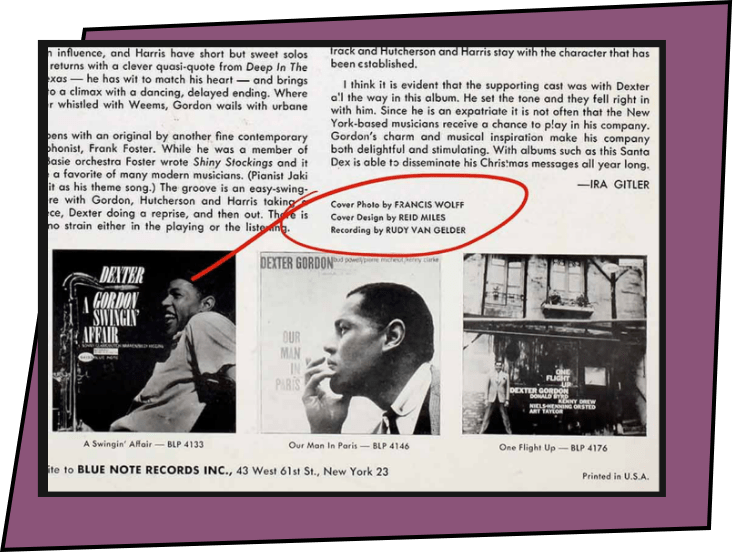Reid Miles (July 4, 1927 - February 2, 1993) was an American graphic designer and photographer best known for his work for Blue Note Records in the 1950s and 1960s. Reid Miles was born in Chicago, Illinois. Following the Stock Market Crash and the separation of his parents, moved with his mother to Long Beach, California, in 1929. After high school Miles joined the Navy and, following his discharge, moved to Los Angeles to enroll at Chouinard Art Institute. After working in New York City in the early 1950s for John Hermansader and Esquire Magazine,
MILES WAS HIRED IN HIS OWN RIGHT AROUND 1955 BY FRANCIS WOLFF OF THE JAZZ RECORD LABEL BLUE NOTE TO DESIGN ALBUM COVERS WHEN THE LABEL BEGAN RELEASING THEIR RECORDINGS ON 12" LPS.


Miles wasn't particularly interested in jazz, professing to have much more of an interest in classical music.
Miles designed over five hundred covers, frequently incorporating the session photographs of Francis Wolff and, later, his own photographs, although many of his later designs dispensed entirely with photographs. Miles wasn't particularly interested in jazz, professing to have much more of an interest in classical music; he received several copies of each Blue Note album he designed but gave most of them to friends or sold them to used record shops. Miles used the descriptions of the sessions relayed to him by producer Alfred Lion to create the artwork. Lion's retirement as a record producer in 1967 coincided with the end of Miles' connection with Blue Note.
"Fifty Bucks an album...they loved it, thought it was modern, they thought it went with the music...one or two colors to work with at that time and some outrageous graphics!" As a photographer, Miles moved to Hollywood, California in 1971 and operated a studio under the name Reid Miles Inc. Many of his most famous shots were elaborate montages of people and group photographs, reminiscent of Norman Rockwell. Several of these were shot for record album covers, including Chicago IX: Chicago's Greatest Hits and The Basement Tapes. Miles created a fine art series of photographs. A signature technique of these were the visual elements of the photograph that continued across the matting and frames. He later directed television commercials, which garnered him a Clio Award in 1976.
Some of his most celebrated designs adorned the sleeves of albums such as,
Into Somethin'
Out to Lunch!
Unity
Somethin' Else
Let Freedom Ring
Hub-Tones
Midnight Blue
Cool Struttin'
The Sidewinder



